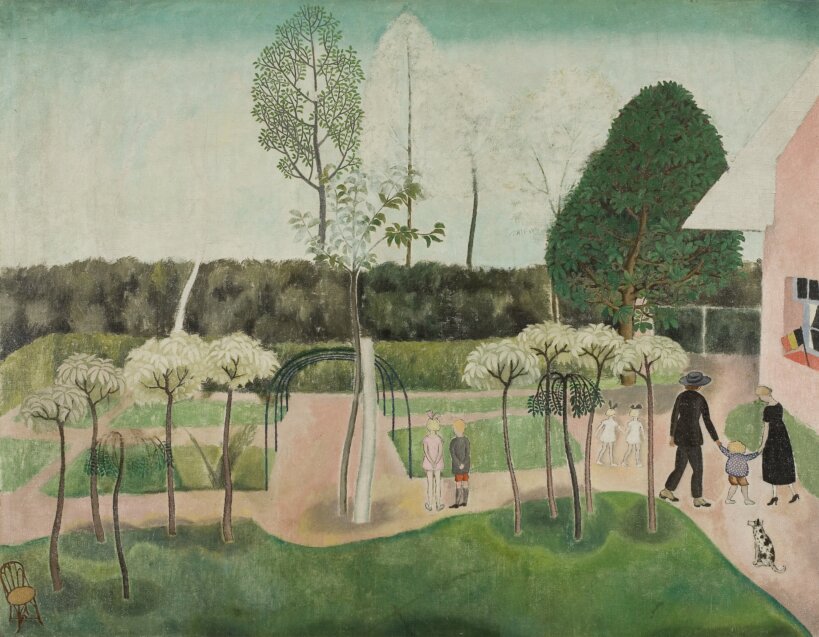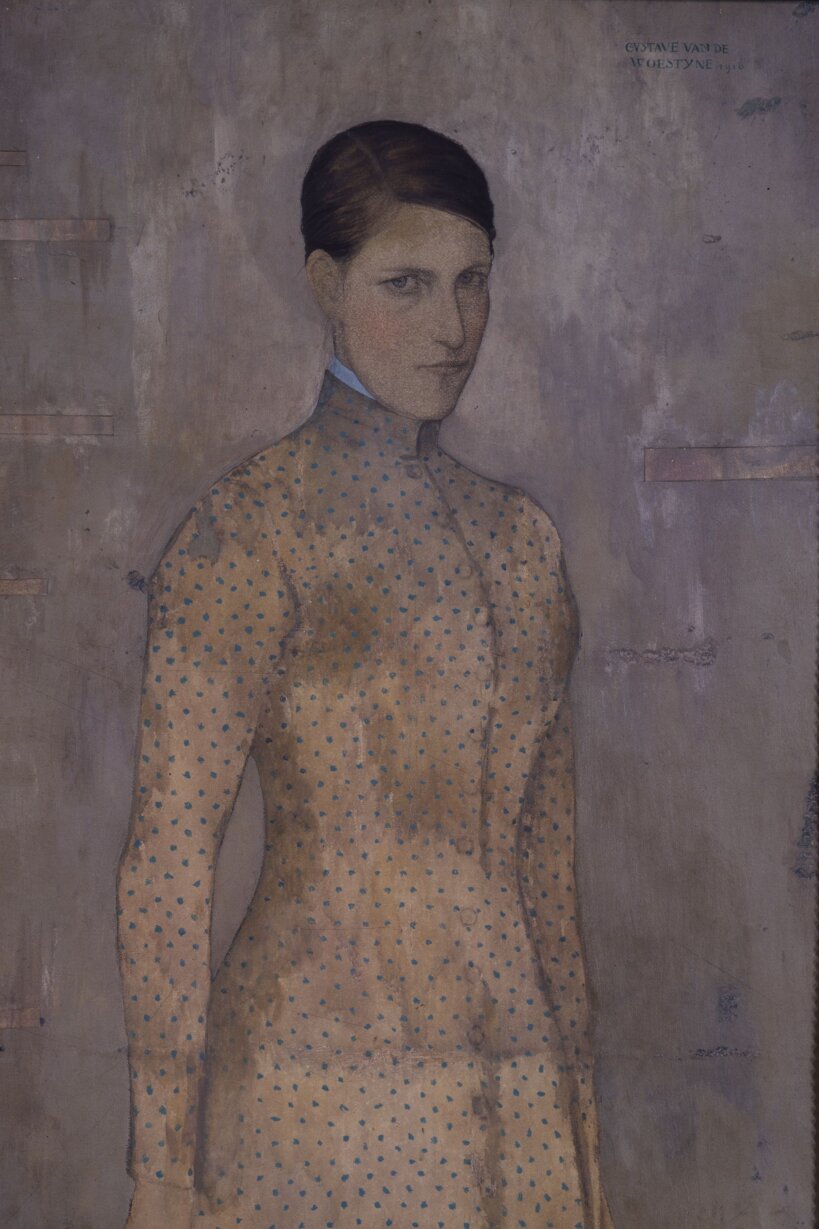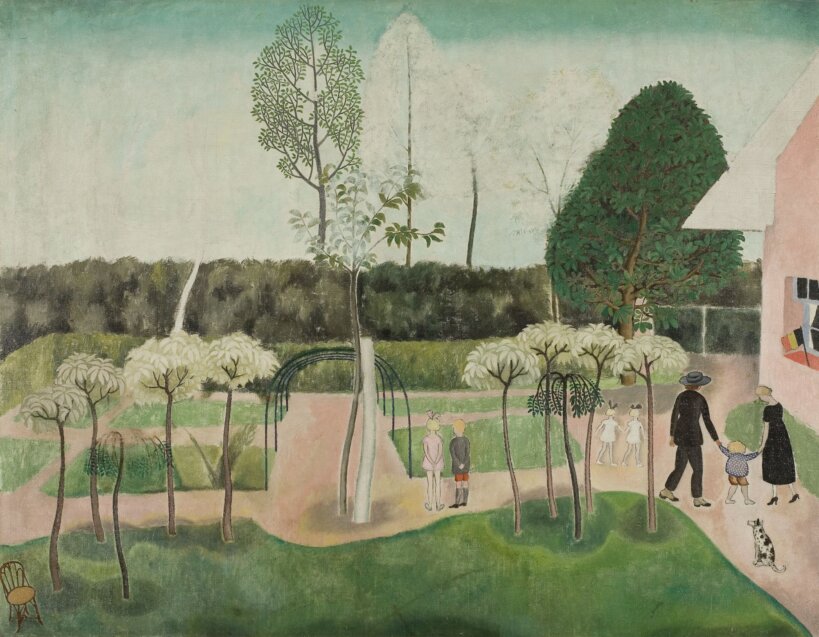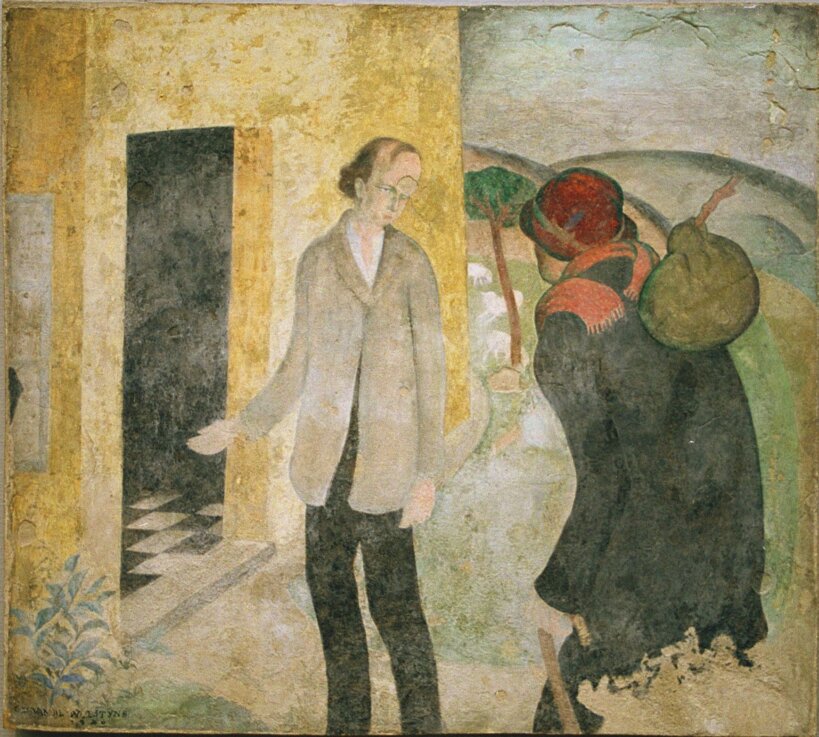I met Gustave van de Woestijne in Waregem; he lived in the Rozenhuis. He was in the midst of his mystical period then. We became very good friends, even though Gustave was not an easygoing fellow. For instance, I never saw him at work, because you were simply not allowed in. When he saw someone approaching the house, he would quickly get dressed, walk out the door, say he just happened to be leaving, and take the visitor away with him. It’s odd when you consider that he had a beautiful fresco at the entrance to his house, in the corridor, that depicted hospitality: Gustave van de Woestijne welcoming a beggar inside. But not a single person entered, since he also had a big dog to keep people out, and a big lock on the gate. He was a curious fellow.
Jules De Sutter, 1967 [1]




